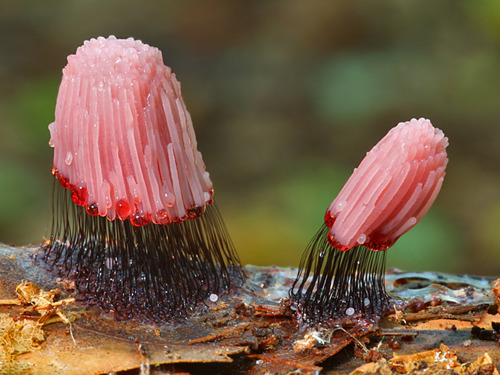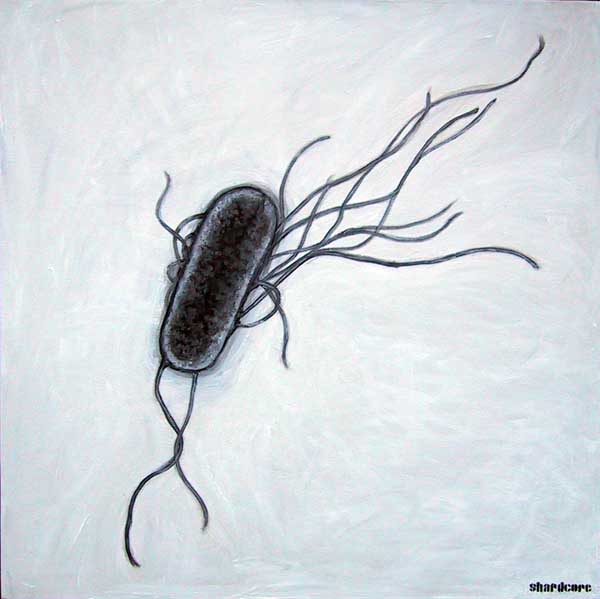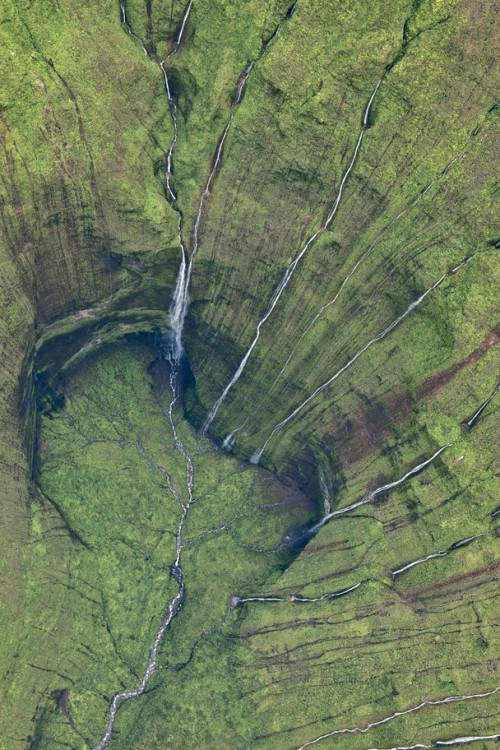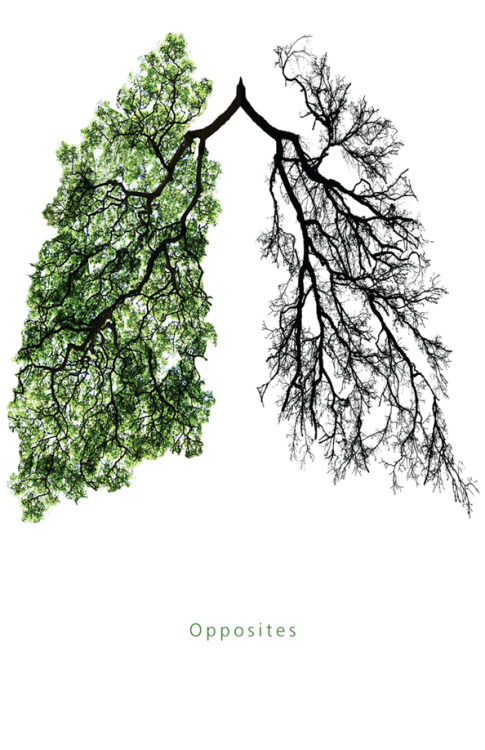Wednesday, August 31, 2011
Monday, August 29, 2011
Free Radicals Crucial to Suppressing Appetite(▒)(░)

Published Aug. 28 in the advanced online issue of Nature Medicine, the study found that elevating free radical levels in the hypothalamus directly or indirectly suppresses appetite in obese mice by activating satiety-promoting melanocortin neurons. Free radicals, however, are also thought to drive the aging process.
"It's a catch-22," said senior author Tamas Horvath, the Jean and David W. Wallace Professor of Biomedical Research, chair of comparative medicine and director of the Yale Program on Integrative Cell Signaling and Neurobiology of Metabolism. "On one hand, you must have these critical signaling molecules to stop eating. On the other hand, if exposed to them chronically, free radicals damage cells and promote aging."
"That's why, in response to continuous overeating, a cellular mechanism kicks in to suppress the generation of these free radicals," added lead author Sabrina Diano, associate professor of Ob/Gyn, neurobiology and comparative medicine. "While this free radical-suppressing mechanism -- promoted by growth of intracellular organelles, called peroxisomes -- protects the cells from damage, this same process will decrease the ability to feel full after eating."
After the mice ate, the team saw that the neurons responsible for stopping overeating had high levels of free radicals. This process is driven by the hormone leptin and glucose, which signal the brain to modulate food intake. When mice eat, leptin and glucose levels go up, as does free radical levels. However, in mice with diet-induced obesity, these same neurons display impaired firing and activity (leptin resistance); in these mice, levels of free radicals were buffered by peroxisomes, preventing the activation of these neurons and thus the ability to feel sated after eating.
According to Horvath and Diano, the crucial role of free radicals in promoting satiety as well as degenerative processes associated with aging may explain why it has been difficult to develop successful therapeutic strategies for obesity without major side effects. Current studies address the question of whether, under any circumstance, satiety could be promoted without sustained elevation of free radicals in the brain and periphery.
The study was supported by grants form the National Institutes of Health and the American Diabetes Association.
Story Source:
The above story is reprinted (with editorial adaptations by ScienceDaily staff) from materials provided by Yale University.
Journal Reference:
- Sabrina Diano, Zhong-Wu Liu, Jin Kwon Jeong, Marcelo O Dietrich, Hai-Bin Ruan, Esther Kim, Shigetomo Suyama, Kaitlin Kelly, Erika Gyengesi, Jack L Arbiser, Denise D Belsham, David A Sarruf, Michael W Schwartz, Anton M Bennett, Marya Shanabrough, Charles V Mobbs, Xiaoyong Yang, Xiao-Bing Gao, Tamas L Horvath. Peroxisome proliferation–associated control of reactive oxygen species sets melanocortin tone and feeding in diet-induced obesity. Nature Medicine, 2011; DOI: 10.1038/nm.2421
Friday, August 26, 2011
Thursday, August 25, 2011
Tuesday, August 23, 2011
Stemonitis fusca IS....

Stemonitis fusca is a rather marvelous species of slime mold that carries its jelly-like spore-forming fruiting bodies on curious stilts | photo by Nick Cantle
Monday, August 22, 2011
bLack sEed Oil is>██____▒▒


The use of black seed oil to treat and prevent dozens of conditions goes back at least 2000 years. Many ancient writers have referenced black seed oil as a legendary herbal remedy that has renowned protective and healing powers. In fact, that Islamic prophet Mohammed reportedly stated: “Black seed oil heals every disease except for death.” (The FDA would have had a conniption fit over this!) In Egypt the oil pressed from black seed was named “Pharaoh’s Oil.” For this society Black Seed Oil was used most often as a digestive aid. The Bible contains the first written record of Black Seed when Isaiah records that ketsah (Hebrew word for what was later shown to be Nigella sativa) must be reaped by a different technique than that used with wheat (Isaiah 28:25-27).
In more modern times, researchers have discovered that black seed oil truly is a very unique substance — some calling it a superfood — that contains over one hundred different nutrients and that act synergistically to bolster overall wellness and battle a host of common medical conditions — it is made up of about 21% protein and contains significant amounts of essential fatty acids; minerals such as iron, zinc, and selenium; and vitamins A, B, and C.
Here are some of the major benefits that scientists studying black seed oil have identified:
- Perhaps the most diverse and potent effect of black seed oil is its ability to strengthen the immune system. White blood cells thrive on black seed oil, and there is no greater preventer of disease of all types than an immune system that is working effectively. Black seed oil’s positive effects on digestion also empower the immune system.
- Black Seed Oil produces prostaglandin E1. This particular prostaglandin (the scientific community has identified only twelve) works by regulating hormone secretion. It inhibits inflammation, helps to prevent thrombosis, reduces cholesterol synthesis and works to black the formation of abnormal cells. It also lowers bold pressure and may protect the liver from the effects of alcohol and other irritating drugs. This substance also contributes to Black Seed’s general balancing action by maintaining the salt and water balance, and it regulates insulin secretion, nerve conduction and gastrointestinal function.(1)
- Black Seed Oil (BSO) has a very impressive impact on the health and nutrition of cells throughout the body as well. It contains various substances that have been clinically linked to better cell function by maintaining healthy and effective cell membranes. When our bodies are working well on a cellular level, nutrients are better absorbed, wastes more efficiently eliminated, and basically the body is freed up to heal and repair itself the way it was designed to. Black seed oil is particularly beneficial to brain and nervous system cells.
- Black Seed Oil is also an excellent body cleanser. It helps keep the digestive tract healthy, and it also has anti-parasitic qualities that help rid the body of unwanted organisms that can cause disease and rob us of nutrients.
- Black Seed Oil is a good source of polyunsaturated fatty acids (PFAs), a type of fat that researchers are discovering more and more exciting benefits for. PFAs perform many tasks including regulating metabolism, drawing toxins to the skin for excretion from the body, improving liver and circulatory functions, and regulating insulin and cholesterol levels.
- Black Seed Oil has a reputation as a very effective remedy for respiratory conditions such as coughs, colds, and asthma and other allergies. This is likely due to its anti-inflammatory and anti-spasmodic actions.
- Black Seed Oil also contains a variety of antioxidants that battle free radical damage. Free radicals contribute to many debilitating diseases including cancer, heart disease, arthritis, and neurological disorders.
Sunday, August 21, 2011
Jesse Boykins III “Back Home (Mermaids & Dragons)” – Video & MP3

New Images Reveal Structures of the Solar Wind as It Travels Toward and Impacts Earth▽▽▽▽▽▽▽▽

The images from a December 2008 CME event reveal an array of dynamic interactions as the solar wind, traveling at speeds up to a million miles per hour, shifts and changes on its three-day journey to Earth, guided by the magnetic field lines that spiral out from the Sun's surface. Observed structures include the solar wind piling up at the leading edge of a CME, voids in the interior, long thread-like structures, and rear cusps. Quiet periods show a magnetic disconnection phenomenon called a plasmoid, "puffs" that correlate with in-situ density fluctuations, and V-shaped structures centered on the current sheet -- a heliospheric structure in which the polarity of the Sun's magnetic field changes from north to south.
"For the first time, we can see directly the larger scale structures that cause blips in the solar wind impacting our spacecraft and Earth," said SwRI's Dr. Craig DeForest, lead author of an Astrophysical Journal article released online. "There is still a great deal to be learned from these data, but they are already changing the way we think about the solar wind."
"For 30 years," said co-author Dr. Tim Howard, also of SwRI, "we have been trying to understand basic anatomy of CMEs and magnetic clouds, and how they correspond to their source structures in the solar corona. By tracking these features through the image data we can establish what parts of a space weather storm came from which parts of the solar corona, and why."
The team used a combination of image processing techniques to generate the images over a distance of more than 1 AU (astronomical unit), overcoming the greatest challenge in heliospheric imaging, that of extracting faint signals amid far brighter foreground and background signals. Small "blobs" of solar wind tracked by the team were more than 10 billion times fainter than the surface of the full Moon and 10 thousand times fainter than the starfield behind them.
"These data are like the first demonstration weather satellite images that revolutionized meteorology on Earth," said DeForest. "At a glance it is possible to see things from a satellite that cannot be extracted from the very best weather stations on the ground. But both types of data are required to understand how storms develop."
In particular, the new images reveal the shape and density of Jupiter-sized clouds of material in the so-called empty space between planets; in contrast, in-situ probes such as the WIND and ACE spacecraft reveal immense detail about the solar wind, at a single point in space.
Funding for this research was provided by the National Science Foundation SHINE Competition, the NASA Heliophysics Program and the National Solar Observatory by the U.S. Air Force under a Memorandum of Agreement. The paper, "Observations of Detailed Structure in the Solar Wind at 1 AU with STEREO/HI-2," by DeForest, Howard and S.J. Tappin (National Solar Observatory) was published online for the September 1, 2011 print issue of the Astrophysical Journal.
STEREO is part of NASA's Solar Terrestrial Probes Program in NASA's Science Mission Directorate in Washington. The program seeks to understand the fundamental physical process of the space environment from the Sun to Earth and other planets.
Story Source:
The above story is reprinted (with editorial adaptations by ScienceDaily staff) from materials provided by Southwest Research Institute.
Journal Reference:
- C. E. DeForest, T. A. Howard, S. J. Tappin. Observations of Detailed Structure in the Solar Wind at 1 AU with STEREO/HI-2. The Astrophysical Journal, 2011; 738 (1): 103 DOI: 10.1088/0004-637X/738/1/103
Friday, August 19, 2011
Tuesday, August 16, 2011
E. Coli, Salmonella May Lurk in Unwashable Places in Produce

E. coli 0157:H7 was present in tissues of mung bean sprouts and Salmonella in peanut seedlings after the plants' seeds were contaminated with the pathogens prior to planting. Amanda Deering, a postdoctoral researcher in food science, said seeds could be contaminated in such a manner before or after planting through tainted soil or water.
"The pathogens were in every major tissue, including the tissue that transports nutrients in plants," said Deering, whose results were published in separate papers in the Journal of Food Protection and Food Research International.
Deering and Robert Pruitt, a professor of botany and plant pathology, said finding pathogens inside plants has been challenging because tests require slicing off pieces of the plants, which can move the bacteria from the outside to the inside or vice versa. It becomes difficult to know where a pathogen might have been before the plant was cut.
"The results are often imprecise because the methods allow bacteria to move," said Pruitt, a co-author of the findings.
Deering used a fixative to freeze the location of the bacteria in the plant tissues before slicing samples. Antibodies labeled with fluorescent dye were used to detect the pathogens, a process called immunocytochemistry.
"This shows us as close to what was in the plant when it was living as possible," Deering said. "The number of bacteria increased and persisted at a high level for at least 12 days, the length of the studies."
Deering said she was able to count hundreds of bacteria in almost every type of tissue.
Proper sanitization would eliminate Salmonella and E. coli from the surface of foods, but not inner tissues, Deering and Pruitt said. Cooking those foods to temperatures known to kill the pathogens would eliminate them from inner tissues.
Deering and Pruitt will continue to study the pathogens to determine how they survive inside plant tissues and possible ways to eliminate them. The U.S. Department of Agriculture's Agricultural Research Service funded their work.
Story Source:
The above story is reprinted (with editorial adaptations by ScienceDaily staff) from materials provided by Purdue University.
Journal References:
- Amanda J. Deering, Robert E. Pruitt, Lisa J. Mauer, Bradley L. Reuhs. Identification of the Cellular Location of Internalized Escherichia coli O157:H7 in Mung Bean, Vigna radiata, by Immunocytochemical Techniques. Journal of Food Protection, 2011; 74 (8): 1224 DOI: 10.4315/0362-028X.JFP-11-015
- Amanda J. Deering, Lisa J. Mauer, Robert E. Pruitt. Internalization of E. coli O157:H7 and Salmonella spp. in plants: A review. Food Research International, 2011; DOI: 10.1016/j.foodres.2011.06.058
Sunday, August 14, 2011
Video | Bobby From Boston: A Documentary

The greatest vintage men’s store is in Boston. Bobby from Boston. 10 Engines turns us onto this docu.
Bobby From Boston: A Documentary from Lea Winkler on Vimeo.
Friday, August 12, 2011
▼❏Health Benefits of " Broccolini ?" ▼❏▼❏

Nervous System
Broccolini contains a high amount of potassium, which helps maintain a healthy nervous system and optimal brain function, as well as promotes regular muscle growth.
Blood Pressure
Along with a high amount of potassium, Broccolini also contains magnesium and calcium that help regulate blood pressure.
Vitamin C
One cup of Broccolinicontains the RDA of vitamin C, an antioxidant necessary for fighting against free radicals. Moreover, vitamin C is an effective antihistamine for easing the discomfort of the common cold.
Bone Health
Broccolini contains high levels of both calcium and vitamin K, both of which are important for bone health and prevention of osteoporosis.
Sun Damage
Broccolini is helpful in repairing skin damage thanks to the glucoraphanin it contains which helps the skin to detoxify and repair itself.
Immune System
One cup of Broccolini bolsters the immune system with a large dose of beta-carotene. Trace minerals, such as zinc and selenium, further act to strengthen immune defense actions.
Cancer
Broccolini contains glucoraphanin, which with the body processes into the anti-cancer compound sulforaphane. This compound rids the body H. pylori, a bacterium found to highly increase the risk of gastric cancer. Furthermore, broccoli contains indole-3-carbinol, a powerful antioxidant compound and anti-carcinogen found to not only hinder the growth of breast, cervical and prostate cancer, but also boosts liver function.
Diet Aid
Broccolini is high in fiber, which aids in digestion, prevents constipation, maintains low blood sugar, and curbs overeating. Furthermore, a cup of broccoli has as much protein as a cup of rice or corn with half the calories.
Vision
Studies have shown that the carotenoid lutein helps prevent age-related macular degeneration and cataracts, as well as possesses anti-cancer effects. Additionally, broccoli is a good source of vitamin A that is needed to form retinal, the light-absorbing molecule that is essential for both low-light and color vision.
Heart Disease
The carotenoid lutein may also slow down or prevent the thickening of arteries in the human body, thus fighting against heart disease and stoke. The B6 and folate in broccoli also reduce the risk of atherosclerosis, heart attack, and stroke.
Video: Teebs "Moments"

Teebs "Moments" from Paul Trillo on Vimeo.
Off LA beats conductor Teebs' debut album, Ardour, "Moments" recently received a great video treatment from director Paul Trilo.
Thursday, August 11, 2011
Wednesday, August 10, 2011
▼❏▼❏Video | “Who Made Your Clothes and Do you Care?” from Etsy

Etsy comes through with a video that asks New Yorkers a very simple question: Where do your clothes come from and do you care? Real talk, finally.
Tuesday, August 9, 2011
GOLDENSEAL BEFORE BED▲ △

The American Indians used an infusion of the root for skin problems.
This herb is known as …
* One of the herbal cold remedies
* A mouthwash that is one of the home remedies for canker sores
* A gargle that can help mend a sore throat
* A treatment for internal bacterial parasites and gastritis
* An external wash for skin problems.
One of the purported benefits of Goldenseal that has no scientific proof is how it supposedly masks the content of drug substances in urine tests. This might simply be an urban legend.
Goldenseal root directly affects the mucous membranes. This bitter-tasting, antibiotic herb is still used to boost the immune system and fight pathogenic bacteria. Some people believe the herb may be good for colds and flu, and they use a combination of Echinacea and Goldenseal.
Goldenseal has been used successfully in the treatment of bacterial, fungal, and protozoan infections. In addition to colds and flu, goldenseal has been used to treat pneumonia, sinusitis, earache, tinnitus, sties, canker sores, athlete’s foot, bladder infections, chronic fatigue syndrome, intestinal parasites, vaginitis, viral infections, various wounds, and yeast infections. Goldenseal has a long history of use as a gastronintestinal remedy, especially for infectious diarrhea.
Most studies about the benefits of Goldenseal have focused on the alkaloid named berberine.
Berberine has demonstrated antibiotic activity and is believed to help with infections of the gastrointestinal tract and the upper respiratory tract.
Berberine is being studied in Chinese medicine for the use in treatment of low white blood cell counts, diarrhea and tumors.
Precautions
Some herbalists believe that when used over a long period of time, Goldenseal might cause digestive disorders or irritation to the mucous membranes.
** This herb should not be used by pregnant or nursing women, as it is believed to stimulate the uterus.
Buying Goldenseal
Because it is rather expensive, be a careful shopper when buying this herb that you are actually getting goldenseal and not an adulterated version containing bloodroot, which is cheaper and can cause dizziness, gastrointestinal burning, vomiting, diarrhea, and intense thirst. Buy goldenseal from a good, reputable health food distributor. BUY THE POWDER OVER THE PILL.
✌ ✖✌ ✖Video / Documentary / CITY SERIES - TOKYO / DJ MURO

Episode three sees us visit the home of the legendary DJ Muro. The King Of Diggin’ breaks down his love of vinyl cover art and traces back his history with the illustrious DJ Krush of Krush Posse.
We also got a super secret peek into Muro’s much-coveted and treasured vinyl attic!
◥◥◥◥Madlib Medicine Show #12: Raw Medicine - Madlib Remixes

-
-
- August 08, 2011
IN THE STORE:
MADLIB MEDICINE SHOW #12: RAW MEDICINE (MADLIB REMIXES)
Pre-order available for September 27th release. Early shipping via Stones Throw.
Announcing live Medicine Show dates in November & December.
When Madlib launched the Madlib Medicine Show last year, the original idea was twelve releases, one a month, alternating between original works and mixtapes spanning different music genres. For the most part, he kept his word - it just took a little longer to finally see number 12. For us, presenting the Medicine Show series has been a grand experiment. Musically, the series represents a lot of what we listen to when we're around Madlib - jazz, dub, prog rock, disco, soul, and his very own kind of hip-hop. So here it is ...
Madlib Medicine Show #12: Raw Medicine is the latest collection of new Madlib Remixes, featuring a host of un-suspecting collaborators that run the gamut from thugs, street poets, star emcees and underdogs. We ain't naming names. The show runs 60 minute with 30+ tracks.
Announcing: In November and December Madlib will hit six as-of-yet-to-be-announced North American cities, taking his Medicine Show LIVE. While the particulars are being sorted out, we’re hearing rumors of J. Rocc sets, live screen printing by Hit+Run of limited edition vinyl, and surprise guests – including one with whom he’s currently working on a collaborative album. (And we do not mean the metal faced guy.)
Album snippet:
Friday, August 5, 2011
New Reggae : SIZZLA - BURN DEM SCHISM (LONG DAYS SHORT RIDDIM) XTERMINATOR PROD [AUG 2011] ★ ☆ ✮
 \
\This year Sizzla has been on a mission to revive the Rasta sacrament in mostly all of his tunes. For most, reggae and "true" livity music is hard to come by due to the overwhelming amount of viral propaganda. So here is the truth... Enjoy>>>
Also Check the recent BBC Interview with Robbo Ranx
While we are on it, Sizzla has had one of his best years musically. So here is Sizzla's best of 2011. Forward!
Sizzla- Can't Dis Rasta (VYBZ KARTEL DISS)
Sizzla- How Dem So Brite
Sizzla – Big 50 Calibah







































